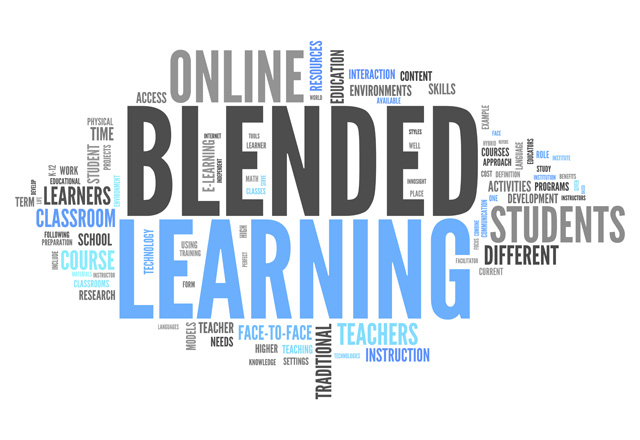
The Future Of Corporate Training – Blended Learning
We live in a day and age where corporate training has grown exponentially, morphing into an activity where everything revolves around practicality and ease of implementation. While training programs have traditionally been face-to-face, being conducted in conference rooms or private facilities, corporate training is slowly transforming into blended learning.
What is Blended Learning?
To better understand what blended learning is all about, let’s consider this example. A HR manager is returning from a couple of interviews in another city. While waiting to board the plane back, he checks his mail on his laptop and discovers an email promoting a training session that will take place later in the day.
He clicks the link and finds himself in front of a 10-minutes long video presentation on “Productivity management”. After he arrives back at the office, the training session has already begun, so he postpones all of the other activities for the day and spends two hours glued to his laptop’s screen. Unlike previous standard corporate training sessions, he gets involved, taking notes and chatting live with other viewers attending the webinar.
The next day, he goes back to his team and reveals to them some of the secrets he learned the other day. Thus, the whole team grows and gets to experience a whole new level of knowledge.
To put it simply, blended learning is a blend of face-to-face and online learning. This method uses various channels, including videos, case studies, face-to-face sessions, scenario-based learning, role-playing, simulations or even gaming. Blended learning can also include the collaboration of virtual teams and open discussions between teams from different corners of the world.
How can you Easily Implement Blended Learning Programs?
With new, ground-breaking devices being introduced on a weekly basis on the market, this new concept of blended learning is becoming increasingly effective. Companies that want to leverage the benefits of blended learning should make the most out of the advancement in technology.
Today, professionals expect to find usable information from a plethora of sources, using multiple devices. Whether it’s watching a YouTube video, reading an article, downloading a podcast, looking at an infographic, attending a webinar or performing an interactive scenario-based game on the smartphone or phablet, blended learning is everywhere.
If it’s used strategically, blended learning could prove invaluable for both small and large companies. To diagnose this learning method, companies will need to start creating device diagnostic programs to determine which platform is the most suitable for certain blended learning programs.
A properly-designed device diagnostic program should be coupled with a good learning management system like LearnFlex. These two can support an organisation to quickly transfer knowledge and information to their workforce using multiple devices, including smartphones, tablets and phablets.
Blended learning programs, in order to be effective, should be created by keeping in mind the unique group of people that will be trained. Their creators should find out which mode of delivery will be the most attractive to the users and what type of extras should be added to each program in order to captivate the audience.
Is Corporate Blended Learning Here to Stay?
Probably one of the most important questions both managers and employees ask themselves is: “Is this new learning method here to stay, or is it going to fade just like other training methods?”. We believe that this corporate training method is here to stay, because it is extremely advantageous for modern professionals who are always connected and prefer to learn while on the go.
Of course, face-to-face training will never be fully replaced by virtual training. It seems that a combination of both is ideal in the corporate environment. More and more organisations are coming to realise the huge benefits of blended learning and are trying to leverage them. However, the success of blended learning methods for a company depends on the organisations’ capability to:
- Fully understand the importance of blended programs and learn how to implement them strategically
- Adapt to the emerging technologies
- Obtain permanent management support
- Provide engaging content that stimulates users
- Facilitate bandwidth for a seamless streaming experience
Conclusion
The future of blended learning in the corporate environment will mainly depend on how the available and future technology will be used to complement instruction-led training. Its success will also go hand in hand with the positive perception managers and employers have on virtual training. Enabling corporations to take the traditional training to a whole new level, blended learning is definitely the corporate training method of the future.
